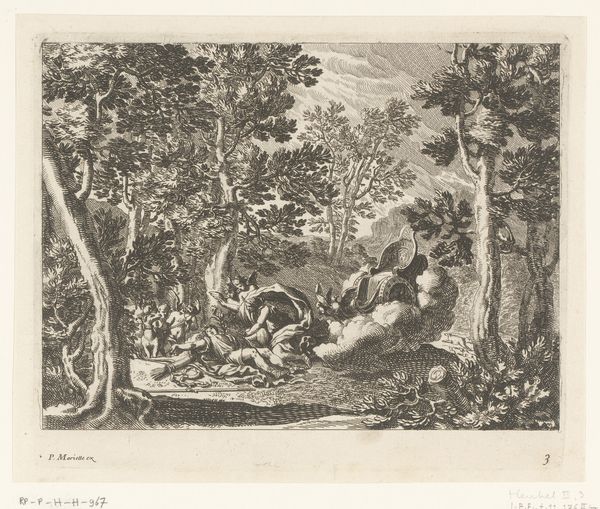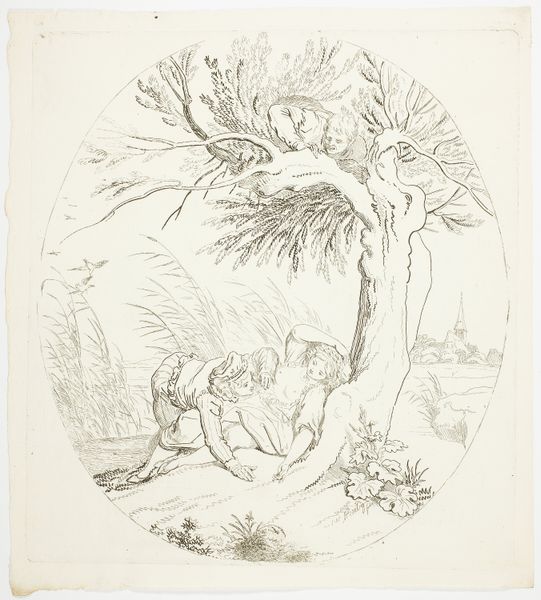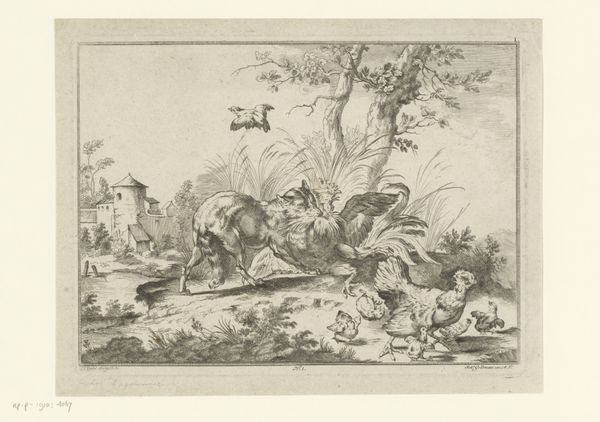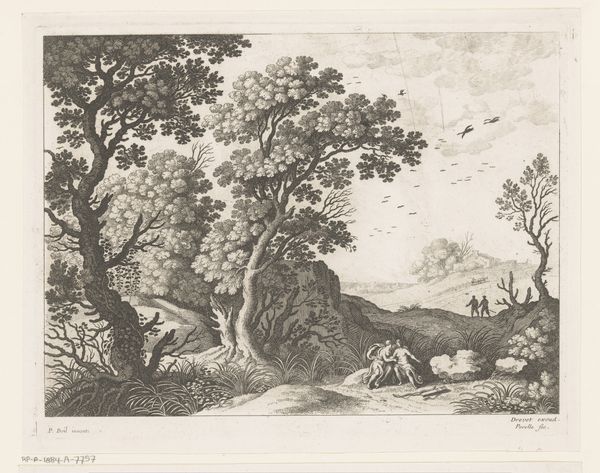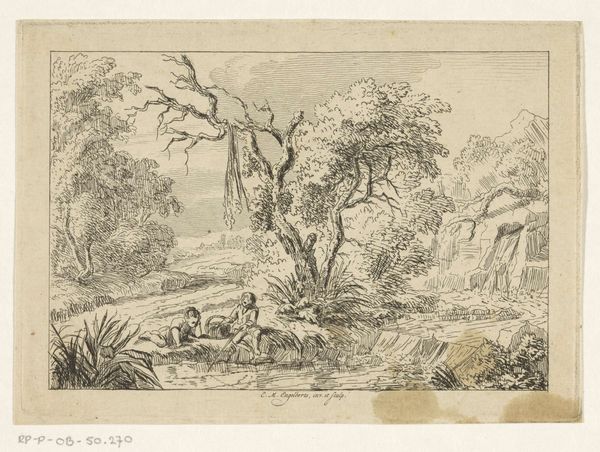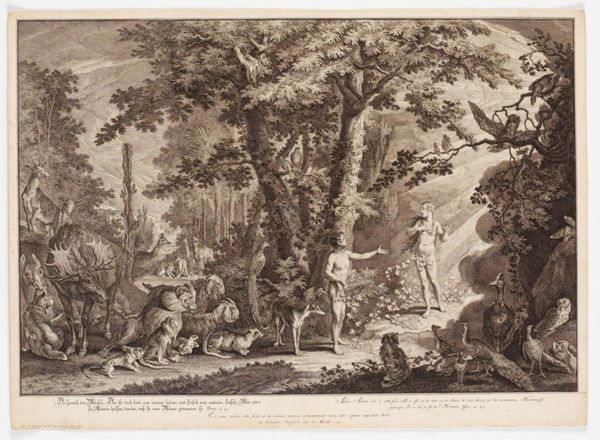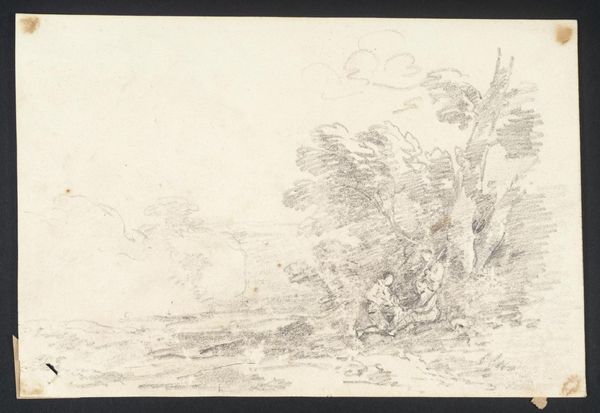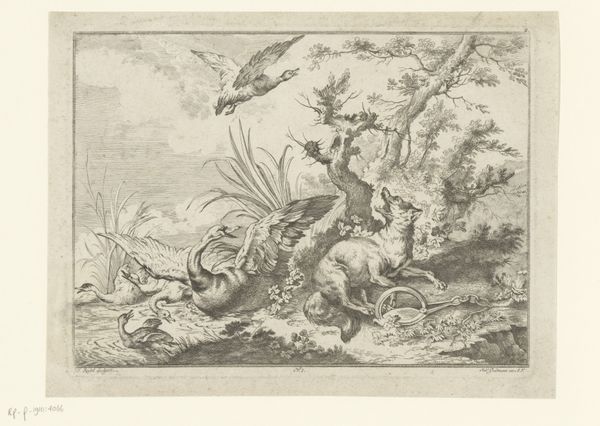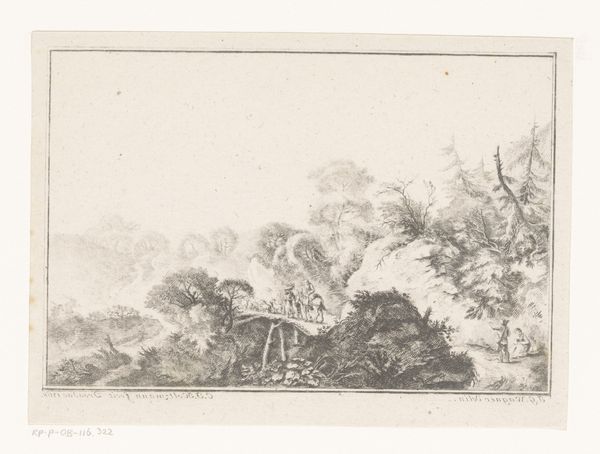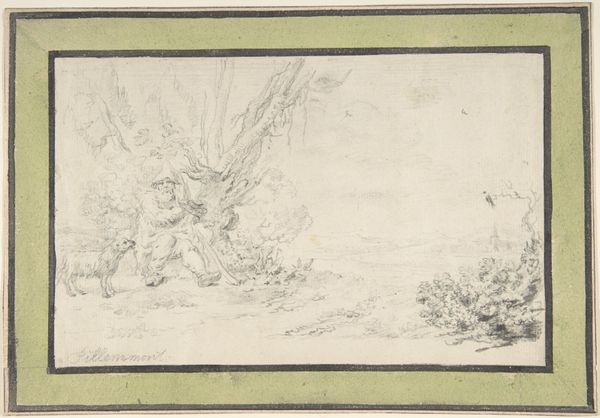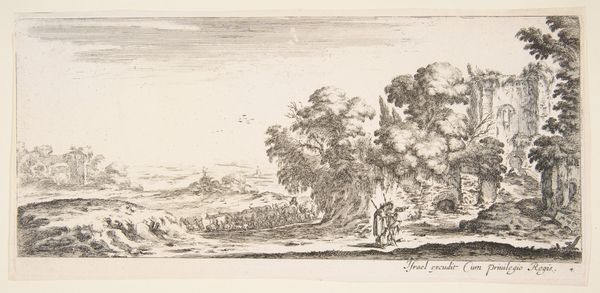
print, etching, engraving
#
animal
# print
#
etching
#
landscape
#
etching
#
genre-painting
#
engraving
Dimensions: height 256 mm, width 369 mm
Copyright: Rijks Museum: Open Domain
Curator: Let's delve into this etching and engraving created by Gilles Demarteau, titled "Fox with paw in trap and startled swan and ducks by water," dating somewhere between 1732 and 1776. Editor: Immediately, I’m struck by the dynamic tension—the crisp lines convey both fragility and violent disruption. The limited palette, a kind of sepia wash, reinforces that sense of old-world anxiety. Curator: The scene feels pulled from a specific historical reality. Think about 18th-century hunting practices, class structures and human relationships with nature. The fox ensnared becomes a symbol of vulnerability exploited by power dynamics inherent in land ownership and game laws. Editor: And the fox isn’t just any fox. It's howling, caught, disrupted. But around it, the other creatures react – the swan extending its wings, ready to attack; a duck in flight. The fox represents thwarted cunning, its usual symbolism reversed—perhaps standing for a disempowered social class or community under pressure. It's all rendered with incredibly detailed engraving! Curator: Precisely! The fox could be a commentary on shifting societal roles during that period, trapped not only physically but also by rigid social expectations and limited social mobility. Furthermore, look at the placement of the water—is it providing life, or creating the landscape for more potential danger? Editor: Yes, the landscape, rendered with such care and precision, only serves to emphasize the fragility of the animals within it. Swans were also symbols of power, especially in this era. This image resonates with ideas about resilience versus power in nature. The piece leaves one feeling off balance. Curator: I find that imbalance essential. It points toward broader narratives of oppression, not just within rural life, but mirroring social injustices that still endure. It forces a confrontation with how power structures intersect with vulnerability. Editor: Agreed. Considering these enduring themes gives the engraving an immediate sense of importance. Thank you for shedding light on the context, it changed the way I understand this visual story! Curator: And you've masterfully guided us through the symbolism, underscoring the visual layers of narrative etched—pun intended!—within.
Comments
No comments
Be the first to comment and join the conversation on the ultimate creative platform.

